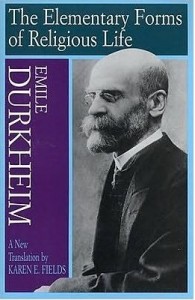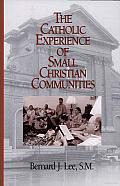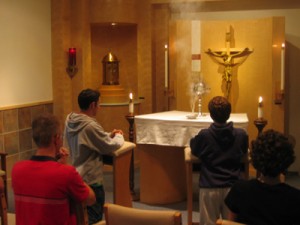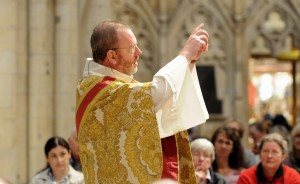 I critique Vasquez’s interpretation of Emile Durkheim in his chapter “Grappling with the Legacy of Modernity: Implications for the Sociology of Religion,” in Religion on the Edge: De-Centering and Re-Centering the Sociology of Religion (2013, Oxford University Press). Vasquez, of course, is not the only sociologist that misinterprets Durkheim, and I base this evaluation not on any great epiphany of my own but on the work of Anne Warfield Rawls – my professor long ago (Anne is the daughter of the philosopher John Rawls). Her continuing work on Durkheim has not only been an inspiration but it has helped me think clear headedly about Durkheim’s work (see in particular her 2004 book Epistemology and Practice: Durkheim’s The Elementary Forms of Religious Life, Cambridge University Press). I also appreciate Vasquez’s work, especially his recent book More Than Belief (2010, Oxford University Press) and the chapter I mentioned above, but, nevertheless, he gets Durkheim wrong. My purpose below then is to simply provide the reader with several quotes from Rawls’ book that debunks the notion that Durkheim had an idealist turn and, secondly, to start a further conversation about Durkheim’s work. Continue reading
I critique Vasquez’s interpretation of Emile Durkheim in his chapter “Grappling with the Legacy of Modernity: Implications for the Sociology of Religion,” in Religion on the Edge: De-Centering and Re-Centering the Sociology of Religion (2013, Oxford University Press). Vasquez, of course, is not the only sociologist that misinterprets Durkheim, and I base this evaluation not on any great epiphany of my own but on the work of Anne Warfield Rawls – my professor long ago (Anne is the daughter of the philosopher John Rawls). Her continuing work on Durkheim has not only been an inspiration but it has helped me think clear headedly about Durkheim’s work (see in particular her 2004 book Epistemology and Practice: Durkheim’s The Elementary Forms of Religious Life, Cambridge University Press). I also appreciate Vasquez’s work, especially his recent book More Than Belief (2010, Oxford University Press) and the chapter I mentioned above, but, nevertheless, he gets Durkheim wrong. My purpose below then is to simply provide the reader with several quotes from Rawls’ book that debunks the notion that Durkheim had an idealist turn and, secondly, to start a further conversation about Durkheim’s work. Continue reading
Author Archives: Mike McCallion
Response to Sarah Moran by Ben Bennett-Carpenter
Thanks to Sarah Moran for the excellent write-up about our article and also the thoughtful and challenging reply. I’d like to follow up Mike’s comments here with a brief response to Sarah’s appreciation/critique of the article. As a brief word of background, I tend to come at these discussions with a focus on the rhetorical considerations, with some sensitivity to issues of affect and practice. Briefly put, I pay special attention to how words are being used in particular contexts. With that in mind, I want to highlight the terms “traditional,” “the Church”, “individual” / “community”, and “New Evangelization.” Continue reading
Response to Sarah Moran by Mike McCallion
I would like to thank Sarah for her interest in our article on NE and Vatican II Catholics and for writing a thoughtful and respectful response to it.
First, I want to say something non-scientific or at least something that sounds non-academic (although Durkheim, Turner, Bellah, Rawls, Rosati and many others who appreciate the findings in the sociology of emotions and ritual practices might disagree that what I am about to write is non-academic) that the difference we outline between NE and Vatican II Catholics is basically affective or emotional for those involved. Indeed, it was explicitly stated by one Vatican II professional we interviewed when he/she said simply, “I just get a different feeling from them” (that is NE professionals – see p. 298). I say this because Sarah is partly right in saying NE professionals have a communal orientation and some Vatican II professionals have an individualistic orientation. However, I think our data (admittedly it is qualitative and cannot be used to generalize to the church at large and, granted, we did not describe our methodology other than in footnote 2) supports the Vatican II professional’s response “I just get a different feeling from them.” We admitted in our article that each type has similar characteristics as the other but when speaking, when teaching, when conversing with each other they are clearly different because you just get a different “feel” from each. We said this to ourselves several times during the research process and wrote “there is a palpable difference” between them in the article. There is something going on, “I can feel it.” Continue reading
Review Essay: The Catholic Experience of Small Christian Communities
Review Essay on: Lee, Bernard J. and D’Antonio, William V. et al. 2000. The Catholic Experience of Small Christian Communities. New York: Paulist Press.
 Lee and D’Antonio et al’s book was the first national study of small Christian communities (SCCs), documenting their growing number and importance. These facts alone should interest Church leaders and social scientists, but especially those involved in small Christian communities and evangelization. Through a rather comprehensive multi-method approach, the authors provide both a descriptive statistical account of SCCs, semi-rich qualitative data via interviews with SCC members, and participant observation of actual SCC activity. Given that others have reviewed these data however (CARA, 2000 and Gautier, 2002), this review will concentrate only on Bernard Lee’s critique of SCCs found in chapter five – “Perspectives and Portents: Theological Interpretations and Pastoral Recommendations.” First, I question Lee’s notion that SCCs are functional equivalents of monasteries for containing religious virtuosi, suggesting this analogy is inadequate in that SCCs function more like Wuthnow’s special purpose groups (SPGs). Secondly, I claim that Lee’s “wanting more” from SCCs is sociologically naïve and indicative of the seemingly ever constant and growing attitudinal and behavioral gap between professional ministers and ordinary laity. Continue reading
Lee and D’Antonio et al’s book was the first national study of small Christian communities (SCCs), documenting their growing number and importance. These facts alone should interest Church leaders and social scientists, but especially those involved in small Christian communities and evangelization. Through a rather comprehensive multi-method approach, the authors provide both a descriptive statistical account of SCCs, semi-rich qualitative data via interviews with SCC members, and participant observation of actual SCC activity. Given that others have reviewed these data however (CARA, 2000 and Gautier, 2002), this review will concentrate only on Bernard Lee’s critique of SCCs found in chapter five – “Perspectives and Portents: Theological Interpretations and Pastoral Recommendations.” First, I question Lee’s notion that SCCs are functional equivalents of monasteries for containing religious virtuosi, suggesting this analogy is inadequate in that SCCs function more like Wuthnow’s special purpose groups (SPGs). Secondly, I claim that Lee’s “wanting more” from SCCs is sociologically naïve and indicative of the seemingly ever constant and growing attitudinal and behavioral gap between professional ministers and ordinary laity. Continue reading
Catholic Devotions

Catholic devotions are external practices such as prayers “attached to particular times or places, insignia, medals, habits or customs” that “manifest the particular relationship of the faithful with the Divine Persons, or the Blessed Virgin Mary . . . or with the Saints . . .” (Directory on Popular Piety and the Liturgy, 2001). I believe new life could be breathed into parishes and families if popular devotional prayers were practiced with great fervor and conviction because the need for affective, nonliturgical, communal prayers remains, and because it is an excellent means in and through which to pass on the Catholic faith to the next generation. Continue reading
The New Evangelization and Its Institutionalization in the Catholic Church
 I concluded my last blog on the New Evangelization (NE) noting that I believe parish NE committees are an indication of a larger process of the institutionalization of the NE in the Archdiocese of Detroit (AOD), even though only 35% of parishes currently have one. I also concluded that if the Church wants its members to know about the NE then developing parish NE committees is an effective method for getting the word out. Continue reading
I concluded my last blog on the New Evangelization (NE) noting that I believe parish NE committees are an indication of a larger process of the institutionalization of the NE in the Archdiocese of Detroit (AOD), even though only 35% of parishes currently have one. I also concluded that if the Church wants its members to know about the NE then developing parish NE committees is an effective method for getting the word out. Continue reading
Catholic New Evangelization: Who has even Heard of It?
 The Archdiocese of Detroit (AOD) has been engaged in a planning process called Together In Faith since 2000, and this process surfaced “New Evangelization” and “youth ministry” as top priorities for the diocese to address. However, little or no research on the New Evangelization (NE), from a sociological perspective, has been conducted.
The Archdiocese of Detroit (AOD) has been engaged in a planning process called Together In Faith since 2000, and this process surfaced “New Evangelization” and “youth ministry” as top priorities for the diocese to address. However, little or no research on the New Evangelization (NE), from a sociological perspective, has been conducted.
Sociologists have not even answered basic questions, such as, “How many parishes have a NE committee?” or “How many people have heard of the NE?” Consequently, I started a research project on the NE in the AOD. After several years in the field, 3 telephone surveys of parish offices, and the administration of a social survey to six suburban parishes, I am prepared to present some basic descriptive statistics on how many parishes within the AOD have NE committees and how many parishioners have heard of the NE.
The Tabernacle in Catholic Parishes
 One of the more contentious issues that has been under debate since Vatican II concerns the location of the tabernacle in local parishes. Indeed, some view this issue as a decisive aspect of the spiritual vitality of the faithful—that the tabernacle location is somehow directly linked to one’s potential for spiritual participation in his or her faith.
One of the more contentious issues that has been under debate since Vatican II concerns the location of the tabernacle in local parishes. Indeed, some view this issue as a decisive aspect of the spiritual vitality of the faithful—that the tabernacle location is somehow directly linked to one’s potential for spiritual participation in his or her faith.
There are four basic alternatives for locating the tabernacle: 1) in the sanctuary usually somewhere behind the altar, 2) out of the sanctuary and at the side of the nave, 3) out of the sanctuary in a separate room, 4) out of the nave in a completely separate chapel. Continue reading